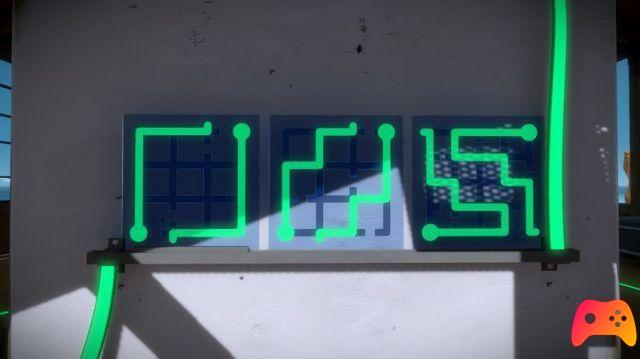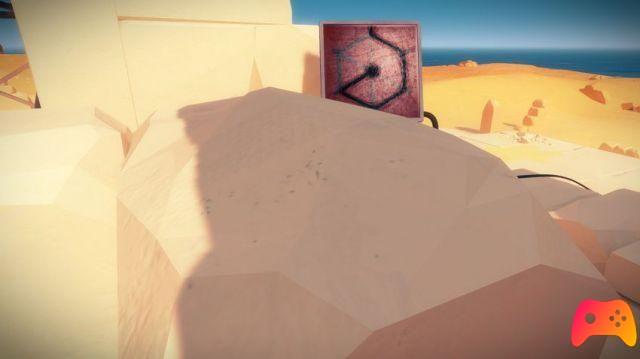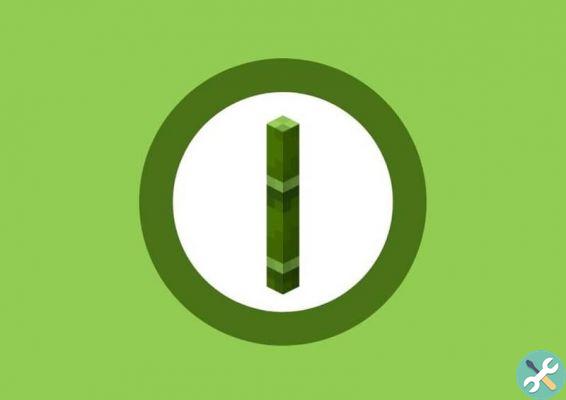
Step by step solution to all The Witness Puzzles and Brainteasers
The Witness is a fairly complex puzzle game: the game puts us in difficulty not only with various high-level puzzles, but above all through a large number of rules that are introduced to each new area of the island.
In this guide we want to help you understand what these rules are and what details you need to pay attention to: after reading it, you can pick up the game again, having fun in finding the solution to the various puzzles, but without the doubt of not having understood how the puzzles were conceived.
Labyrinths of lines
The first puzzles we will have to deal with will be very simple mazes from cereal packaging for children. However, they are useful as a tutorial to understand that our task, in The Witness, is to start from a dot and get to the flashing exit: everything happens by drawing a line.

Black and white squares
One of the first rules of The Witness that you will find yourself dealing with is that of the black and white squares. Quite simply it is necessary that the black and white squares do not share the same spaces. It is not mandatory that all squares of the same color be gathered in a single section: it is possible to separate single squares.

Symmetrical lines
The symmetrical lines are exactly what they seem: two lines that develop symmetrically within the maze of lines. We control one and the other moves automatically. In this type of puzzle it is necessary to find a path that, symmetrically, is valid for both lines. The lines cannot intersect.

Hexagons within the paths, Hexagon Dots
Inside the lines of the mazes of The Witness there may be hexagons: these signs indicate the points where your line must necessarily pass before reaching the exit. All points must be connected, compulsorily.

Multicolored squares
You can consider this rule as an evolution of the black and white squares: if everything is resolved there by dividing into two macro-areas, now we have to learn to create more blocks inside the maze. Different colors must not mix, but it is not compulsory to gather all the squares of the same color within a single area (exactly as with whites and blacks).
In addition, in any puzzle you will have to find the right point of view: you will have to look at the panel through a colored glass that will change the colors. Then you will have to go in front of the puzzle and remember how to correctly divide the zones.

Yellow tetris pieces
In this case, The Witness asks us to divide the labyrinth into sections with a specific shape: if we have an L-shaped piece, we will have to form an area with that shape to contain it. However, the tetris pieces have several interesting rules. The pieces, in fact, can be "added": if you have a 2 × 2 square and an L, you can join them to create a unique shape. But be careful not to "overlap" several pieces: if you have a horizontal piece of three and a vertical piece of three, you cannot join them to make them become a Greek cross.
Normal pieces require the shape to be in the same position indicated by the piece: if you have a vertical straight piece, you cannot create a horizontal section, for example. Some pieces, however, will appear tilted: those can be turned ninety degrees to your liking to find the right place within the maze.
At a certain point you will find, together with the pieces of tetris, also some empty blue squares: these serve to cancel a part of the piece of tetris with which they will be "locked up". That is, if you have a vertical piece of three and you close it with a blue square you will have to create the shape of two.

Cancellation form (inverted Y)
This symbol is one of the most elaborate in the game: it joins virtually every other rule in the game. What it does, quite simply, is "undo" a part of the enigma with which it shares a space. In practice, you have to imagine dividing a section correctly, but leaving an "error" inside: for example, divide all the white squares together, but also include a black square and this inverted Y. Well, the inverted Y will eliminate the black square.
This symbol can interact with any rule, so from time to time you have to guess what to delete and what not.

Sun shapes
The suns are always distinguished by various colors: the rule requires that the suns be divided into pairs of the same color. There cannot be more than two suns of the same color within the same area, but it is possible to mix pairs of different colors.
In addition, the suns will be mixed with squares of various colors: it is not possible to combine suns and squares of the same color. At the same time, however, if a panel has an odd number of suns, it is necessary to use a square of one color together with the “lone” sun of the same color.

Environmental puzzles: the orchard
There are also various types of environmental puzzles. One of the first you will have to deal with is related to fruit trees. What you are asked for is to figure out which branch the apple hangs on and select it on the panel. In some cases you will have to find the right angle from which to look at the tree, or the apple will be missing: a broken branch will help you to arrive at the solution.

Environmental puzzles: the reflection of the sun
A rule that could put many in difficulty is that of the reflection of the sun. Some panels have the solution literally engraved on them, but to notice the scratches on the panel you need to find the right angle from which to look at it. In some cases it is enough to move around it, in others you have to move a lot to be at the right height and distance. It is also possible that the panel is covered by a shadow: in this case you will have to find a way to move it to see it better.

Environmental puzzles: real mazes
In some cases the solution will not be linked in any way to the panel, but only to the environment in which the panel is located. The panel will be at the end of a real labyrinth made up of hedges or walls: we will have to walk in the labyrinth and understand the road we are following and then reproduce it on the panel. Obviously walking will not be enough but we will have to understand the rules: in general you have to pay attention to the ground both visually (the grass could indicate a "block") but also in terms of sound.

Environmental puzzles: visual
In some cases you will have to find the solution by superimposing a perforated surface or branches on the panel: these will indicate the way forward by blocking the road or overlapping the lines of the labyrinth to indicate the correct path. The important thing in these puzzles is to find the right position from which to look at them.
In other cases, however, we will have to deal with transparent panels and we will therefore have to exploit natural elements in the background of the setting to understand how to draw the lines.

Environmental puzzles: sounds
In the jungle, you will have to pay attention to the sounds around you: they will be three levels and you will have to draw a line or pass through a dot in the order you hear them. If your ear is not particularly trained (like mine) it will take you a few attempts to learn to recognize the correct chirps of birds.

Environmental puzzles: shadows
On some occasions you will have to take advantage of the shadows cast by the trees to understand how to create the path. As already mentioned for the "visuals" section, in some cases the shadows will cut your path indicating the points you cannot pass through, in other cases the shadows will overlap with the paths of the labyrinth and will tell you which path you must trace.

These were the main rules of The Witness. We hope they have helped you to get back to playing while maintaining the taste of solving puzzles on your own. Remember that the various rules can be mixed in various ways but, knowing the individual functions, you can arrive at the solution of a very structured puzzle without too much difficulty.
You can find the list of Xbox One achievements at this address and the review at this address.






